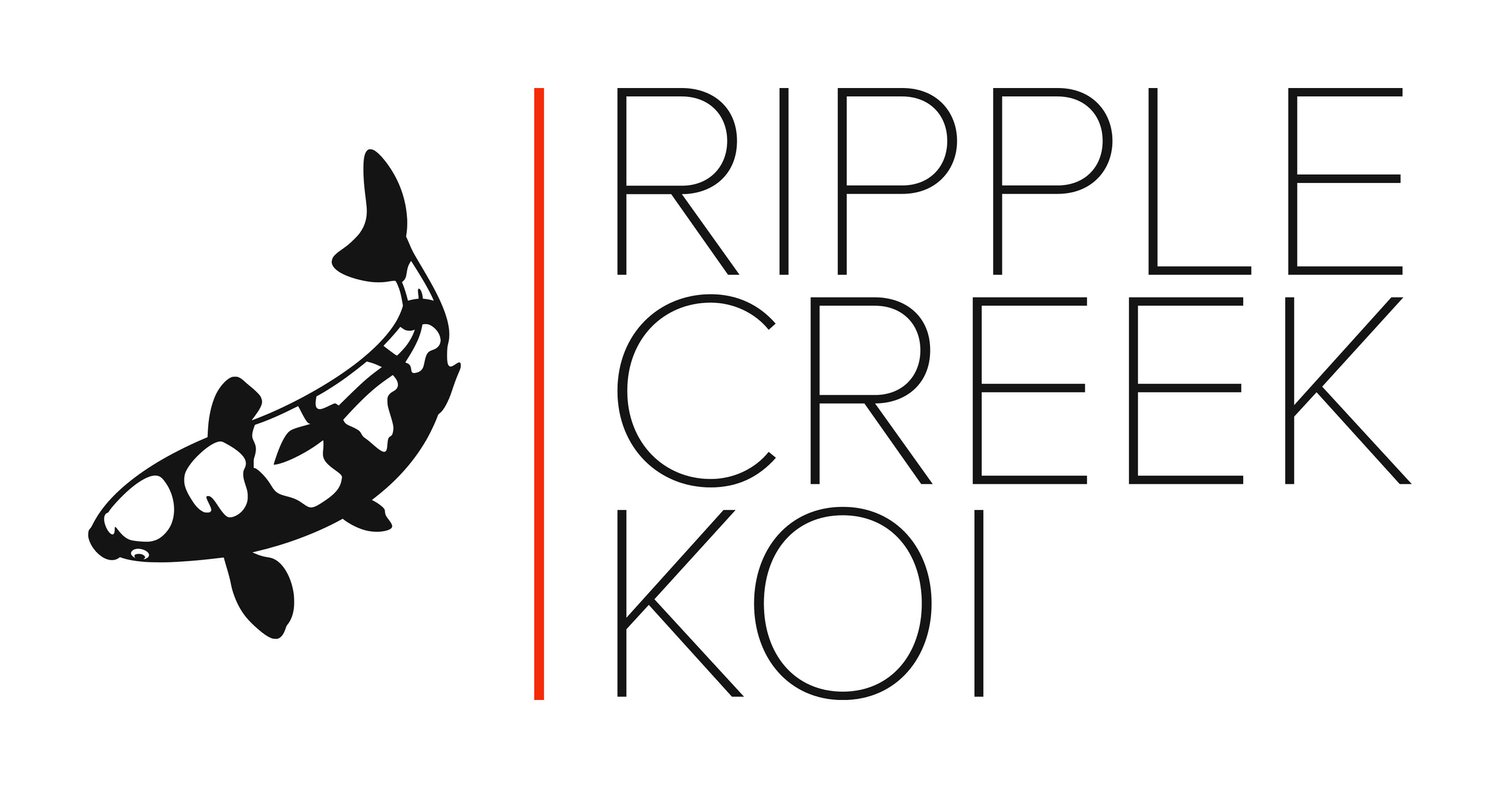FAQS
DO I NEED TO QUARANTINE THE FISH THAT I BUY?
Yes you should Quarantine every new fish!
We guarantee live delivery and full satisfaction. However, the responsibility for maintaining the health of the fish after delivery has to be shared by the customer. We request that you follow the recommendations listed below:
1. Learn what is required to successfully maintain healthy fish. There are numerous websites available covering all aspects of ponds, filtration, water parameters, koi and goldfish health, etc.
2. Quarantine new arrivals for 2 weeks at a minimum temperature of 75 degrees F. Some fish diseases are not apparent at cooler temperatures. We cannot accept responsibility for conditions created by mixing new fish with existing fish.
By purchasing from our website, the user agrees that RippleCreek Koi is not to be held responsible for any previously existing fish in a given environment, nor the cost of medications, materials, consultations, or any other costs incurred by the user.
WHAT WATER TEMPERATURE IS BEST FOR KOI?
Koi are relatively hardy fish, able to withstand a wide range of temperatures. The ideal temperature range for koi is 65 to 75 degrees F. But they will live successfully in water temperatures anywhere from 30 to 85 degrees F.
WHAT KINDS OF FOOD DO KOI EAT?
Most hobbyists feed their koi pellet food specifically tailored to the nutritional needs of koi. Purchase the same koi food that we feed all of our fish.
Koi will try to eat just about anything they can get in their mouth. Many hobbyists supplement their fish’s diets with vegetables, insects, or even dried shrimp.
HOW MUCH SHOULD I FEED MY KOI?
During the spring and summer, feed your koi twice per day, no more than they can consume in two minutes time. During the fall, feed your koi 2-4 times per week, no more than they can consume in two minutes. During the winter, while water temperatures are 52 degrees or colder,
Yes. Koi are omnivorous, and they love to eat aquatic plants.
CAN MY KOI REMAIN IN MY POND DURING THE WINTER?
Yes. Koi are cold-water fish by nature, and have no problem surviving in a pond through the winter. However, you should take steps to ensure that a) the pond does not freeze over completely b) there is adequate oxygen in the water and c) carbon dioxide can escape from the water.
Is it Hard to Take Care of Koi Fish?
No, koi fish care is not hard, but has specific challenges.
Keeping their water clean, balanced and aerated is the highest priority.
They can survive through winters and are omnivores with plenty of food options. They are peaceful and hardy creatures. Koi create an intimate ecosystem and are susceptible to the pathogens from outsiders. By taking the time to slowly introduce new koi, you allow them to acclimate to each other and ensure the health of everyone!
The natural instinct for Nishikigoi is to coexist with others and to bring peace into a home. This, along with their beauty, is a big part of their attraction.
The peace and enjoyment it brings to koi pond owners has brought Nishikigoi appreciation out of Japan and into global culture. We want you to experience the fun and excitement of growing your koi family, and know a little caution can go a long way, especially if you have not added any outside koi in over a year. Take the extra precautions outlined in this article on koi care and you will have a lifetime of tranquility and joy.
The Importance of Quarantine for New Koi
A necessary tool for all koi hobbyists and owners is a separate quarantine tank. It is strongly recommended that every Kodama Koi purchased should be quarantined before adding to your aquarium or pond.
Even with the best care and precautions KOI carry parasites, bacteria, fungus, and other illnesses. Your koi learn to coexist with local bacteria, but are susceptible to outsiders. Quarantining and introducing local fish and water slowly allows all fish to adapt at a safer pace.
It’s not just about introducing something unhealthy to your current fish population either. Japanese koi fish tend to become extremely stressed and exhausted while in transport from the farm or breeder to the owner. A new fish is even more susceptible to sickness, so the quarantine process gives them time to gets their immunity back up to be a healthy new family addition
Why is it so important to quarantine new Koi in a tank?
Do not introduce the new Koi to your pond yet. Keep the new Koi in a separate tank and monitor it for several weeks.
It is critical to quarantine any new Koi from other ponds because the newly purchased Koi may carry parasites, bacteria, fungi, or viruses.
Your Koi providers, whether you buy Koi from your friends or a store, did their best to eliminate them; but all it takes is to overlook an unhatched egg of a parasite, which is microscopic. You do not want it to break out in your main pond and make all your other Koi sick.
Even if if a new Koi is all clean and healthy, it is often exhausted and stressed from the journey to your home, especially if it is shipped overnight from a dealer. It is usually weak from the trip and has low immunity. So if introduced to the main pond too soon, it could get infected from something that your other current Koi are already immune to.
